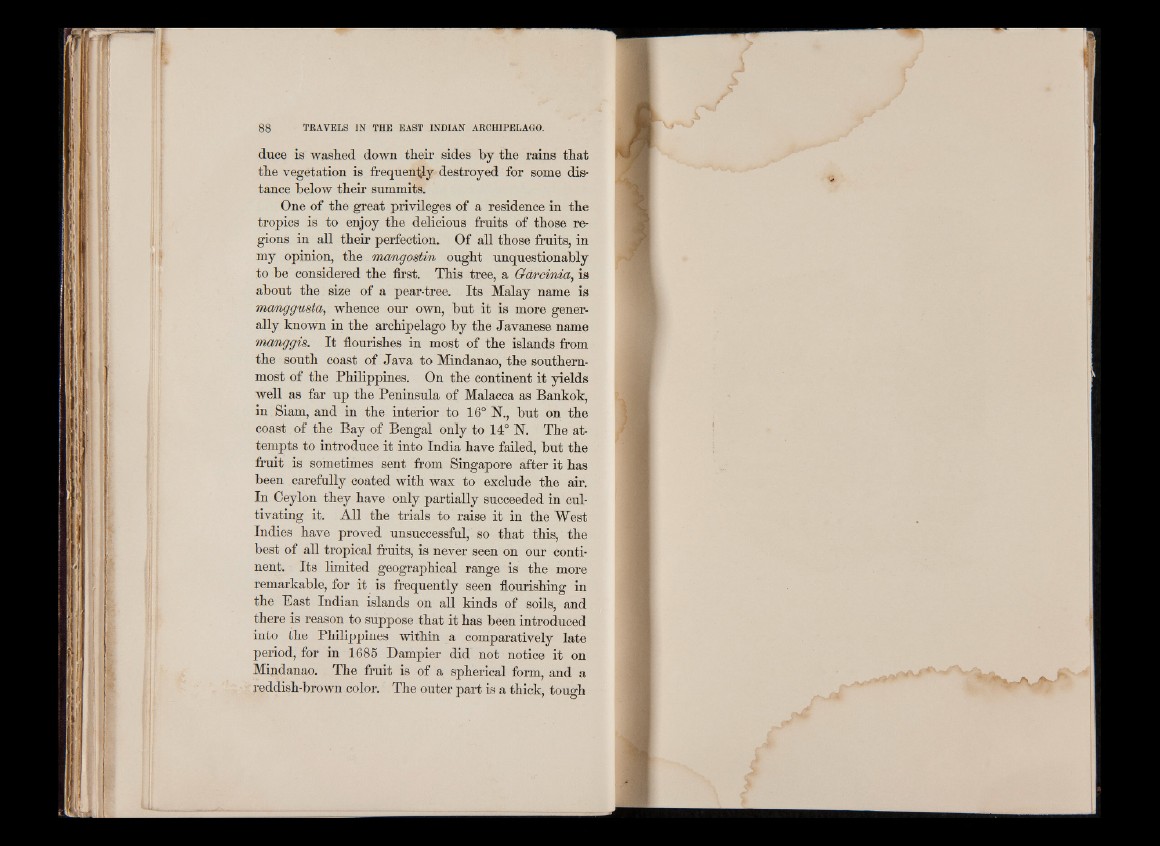
duce is washed down their sides by the rains that
the vegetation is frequency destroyed for some distance
below their summits.
One of the great privileges of a residence in the
tropics is to enjoy the delicious fruits of those regions
in all their perfection. Of all those fruits, in
my opinion, the mangostin ought unquestionably
to be considered the first. This tree, a Ga/rcimda, is
about the size of a pear-tree. Its Malay name is
mcmggusta, whence our own, but it is more generally
known in the archipelago by the Javanese name
mcmggis. It flourishes in most of the islands from
the south coast of Java to Mindanao, the southernmost
of the Philippines. On the continent it yields
well as far up the Peninsula of Malacca as Bankok,
in Siam, and in the interior to 16° N., but on the
coast of the Bay of Bengal only to 14° N. The attempts
to introduce it into India have failed, but the
fruit is sometimes sent from Singapore after it has
been carefnlly coated with wax to exclude the air.
In Ceylon they have only partially succeeded in cultivating
it. All the trials to raise it in the West
Indies have proved unsuccessful, so that this, the
best of all tropical fruits, is never seen on our continent.
Its limited geographical range is the more
remarkable, for it is frequently seen flourishing in
the East Indian islands on all kinds of soils, and
there is reason to suppose that it has been introduced
into the Philippines within a comparatively late
period, for in 1685 Dampier did not notice it on
Mindanao. The fruit is of a spherical form, and a
reddish-brown color. The outer part is a thick, tough
n i